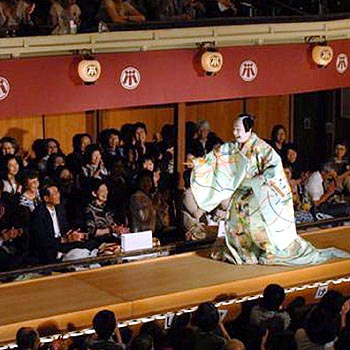The Flick
Unified Artistic Design
The Flick is about transformation. Through the design we will visualize how the characters grow and transform their lives into something better. Along with the characters transformation, we will see the transformation of the theatre. The costumes, lighting, sound, and setting will all depict the mood of the play as being depressed at the beginning and raising to happiness by the end. The mood will also be shown through the colors used. I will work with the actors, designers and technicians to bring this unifying vision to life in a way that will portray The Flick.
Location
The location of my play will take place at the Paramount Theatre
in Charlottesville, VA. This theatre looks a lot like
the theatre I pictured when reading The Flick. This theatre is
historic and has a stage in the front. It also has two aisles for the
audience to walk down as they are entering. This setting matches the setting
of the book. The tickets for this play will be available at a
reasonable price such as 10-25 dollars. The target audience for this play would
be people that have not reached their goal in life yet. They are middle-aged
people that do not have a very good occupation. This play will show how it does
not matter what age you are or what your occupation is, you can still achieve
your goals and dreams.
http://www.theparamount.net/wp-content/uploads/2009/10/streetView.jpg
http://www.barbizon.com/images/portfolio/install_theater_paramount_theater1_small.jpg
Scenic Design
The set design for this play would incorporate many different elements. First of all, this play would take place in a movie theatre scenery. The time period would be portrayed as the modern 21st century. The environment would be very casual. Since the theme is transformation, I would be depicting the depressing and unorganized lifestyle versus the happy and satisfying lifestyle. This image below shows how people can have the potential to be better in life if they just try. This image shows how someone can grow and transform into the person they always dreamed of. The stage will help be set up to portray the story of how Avery and Sam grow in life from being custodians to projectionist. Later, Avery will own his own movie theatre so he can use the projection system that Sam gave him from the old theatre when was bought. When exhibiting transformation, I will also incorporate how the old and dingy movie theatre transformed into a nice, clean and up-to-date theatre. There will be drapes on the stage that signify the beginning and ending of the play. The drapes will also be a visual for the background of the specific setting. During the play, the aisles will be used and the platform stage.
http://www.praxisnow.com/liveeventm2/wp-content/uploads/2012/02/Money-Potential-Graph1.jpg
Costume Design
The
costumes for the characters will represent their personality. They will also
illustrate their habits and what they like as a person. The costumes will be
designed based on their social class to represent their economic status. For
Rose, she will wear unisex clothing to depict her personality. The costumes for
the characters will start off being very causal in the scene with the old
theatre. After the theatre is bought and redone, the characters will wear
uniforms that signify professionalism and separate them from the audience. This
demonstrates transformation as well. The characters are transformed to be more
professional. The costumes will specify character’s social and professional
roles. The characters will match, wearing causal uniforms. I will consult with the costume designer about how they should wear accessories such as their name
badge and Rose may wear a hair clip to hold her hair away from her face. As well as talk about the color of the uniforms being professional with a bright colored polo and kakis.
The bright colored polo will represent transformation and modernism. The polos will have “The Flick” embroidered on them so the audience knows they work
there.
http://www-tc.pbs.org/arts/media/nuarte/assets/08-the-costumes.jpg
Lighting Design
The lighting of the play will create the mood. When
the mood is depressing or sad, the lighting will be dark and dim. When the mood
is exciting and happy, the lighting will be bright and colorful. The lighting
of the old theatre will be dingy and won’t be as bright. The lights may be dim
with a yellow tint to signify the history of the lights. The lights of the new
theatre will be much brighter and crisp looking. The newer lights will be LED
lights that can depict different colors and style. It is up to the lighting designer to decide how he or she would like to depict this. The lighting will reinforce
the central image and theme of the play.
Sound Design
The sound of the play will be depicted through a
variety of instruments and music in the background. There will be surround
sound so everyone in the audience can hear the characters and the music. The
music will create the mood based on the tone and rhythm being played. The sound
will help tell the story by getting louder with happiness and quieter with
sadness. I will converse with the sound designer to include sounds like the sound clip below when Avery gets fired and the mood is sad.
https://www.youtube.com/watch?v=_R9gVc9ggZg
Reference
Baker, Annie. The Flick. New York:Theater Communications Group, 2014. Print.











